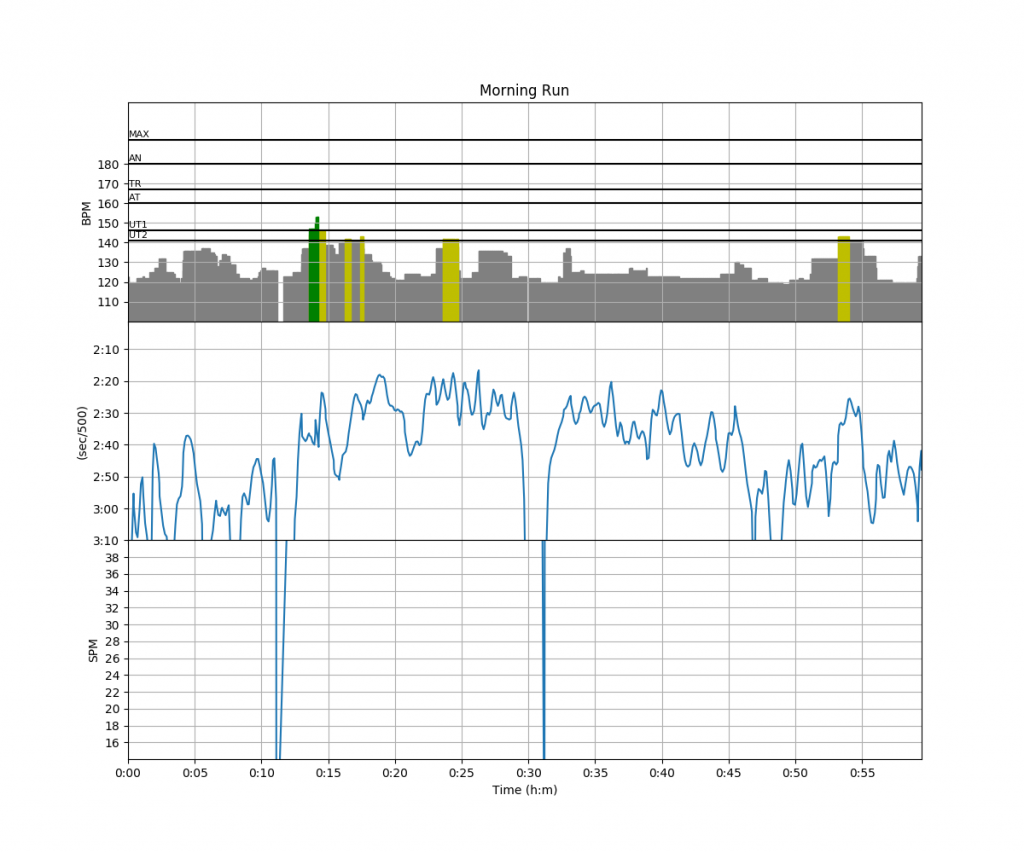I won’t go ice skating or XC running on our lake any more. The ice thickness is 50cm (20 inches), but the lake water level has been lowered by a meter. With thinner ice, this usually leads to cracks around the edges, but we were warned that this time there is a huge air bubble under the ice layer. Nobody knows if and when it is going to crack.
I was thinking about that during the run. There must be material strength tables for ice, so in theory we could calculate the load leading to breaking.
The girls had a workout similar to what I did yesterday (short intervals), except that the intervals were 40 seconds instead of 60 seconds, but there were more of them. I checked our trainer’s training program for the Juniors, and noted that the Masters plan is a shortened, lighter version of the men’s Juniors. I might do some of the Juniors trainings instead of the Masters ones, if I feel my training load is too light.
The ergs were occupied by the 10 to 14 year old Boys (including my two sons of 10 and 12), so the girls did the warming up running with me. I sent them back to the rowing club after 10 minutes of running, and continued myself.
We chose the south/west side of the lake, running on paved roads, because these are the only ones free of ice and snow. As the snow has partially melted and then frozen again, it is not really suitable for running. Most of the forest trails have turned into bobsled tracks.
After importing the data to Strava, I noticed a very low average heart rate, and some strange jumps in the heart rate data.

Is it perhaps time to replace the batteries in the Wahoo Ticks? Talking about battery replacement, I have replaced the two “D cell” batteries in my PM5 today, for the first time since I installed the PM5. The PM started to complain that the batteries were low.
Follow me in social media
Like this:
Like Loading...
Feb 11 2017
Running along the lake
I won’t go ice skating or XC running on our lake any more. The ice thickness is 50cm (20 inches), but the lake water level has been lowered by a meter. With thinner ice, this usually leads to cracks around the edges, but we were warned that this time there is a huge air bubble under the ice layer. Nobody knows if and when it is going to crack.
I was thinking about that during the run. There must be material strength tables for ice, so in theory we could calculate the load leading to breaking.
The girls had a workout similar to what I did yesterday (short intervals), except that the intervals were 40 seconds instead of 60 seconds, but there were more of them. I checked our trainer’s training program for the Juniors, and noted that the Masters plan is a shortened, lighter version of the men’s Juniors. I might do some of the Juniors trainings instead of the Masters ones, if I feel my training load is too light.
The ergs were occupied by the 10 to 14 year old Boys (including my two sons of 10 and 12), so the girls did the warming up running with me. I sent them back to the rowing club after 10 minutes of running, and continued myself.
We chose the south/west side of the lake, running on paved roads, because these are the only ones free of ice and snow. As the snow has partially melted and then frozen again, it is not really suitable for running. Most of the forest trails have turned into bobsled tracks.
After importing the data to Strava, I noticed a very low average heart rate, and some strange jumps in the heart rate data.
Is it perhaps time to replace the batteries in the Wahoo Ticks? Talking about battery replacement, I have replaced the two “D cell” batteries in my PM5 today, for the first time since I installed the PM5. The PM started to complain that the batteries were low.
Follow me in social mediaShare this:
Like this:
By sanderroosendaal • Uncategorized • 2 • Tags: cross-training, crosstraining, rowing, running, training